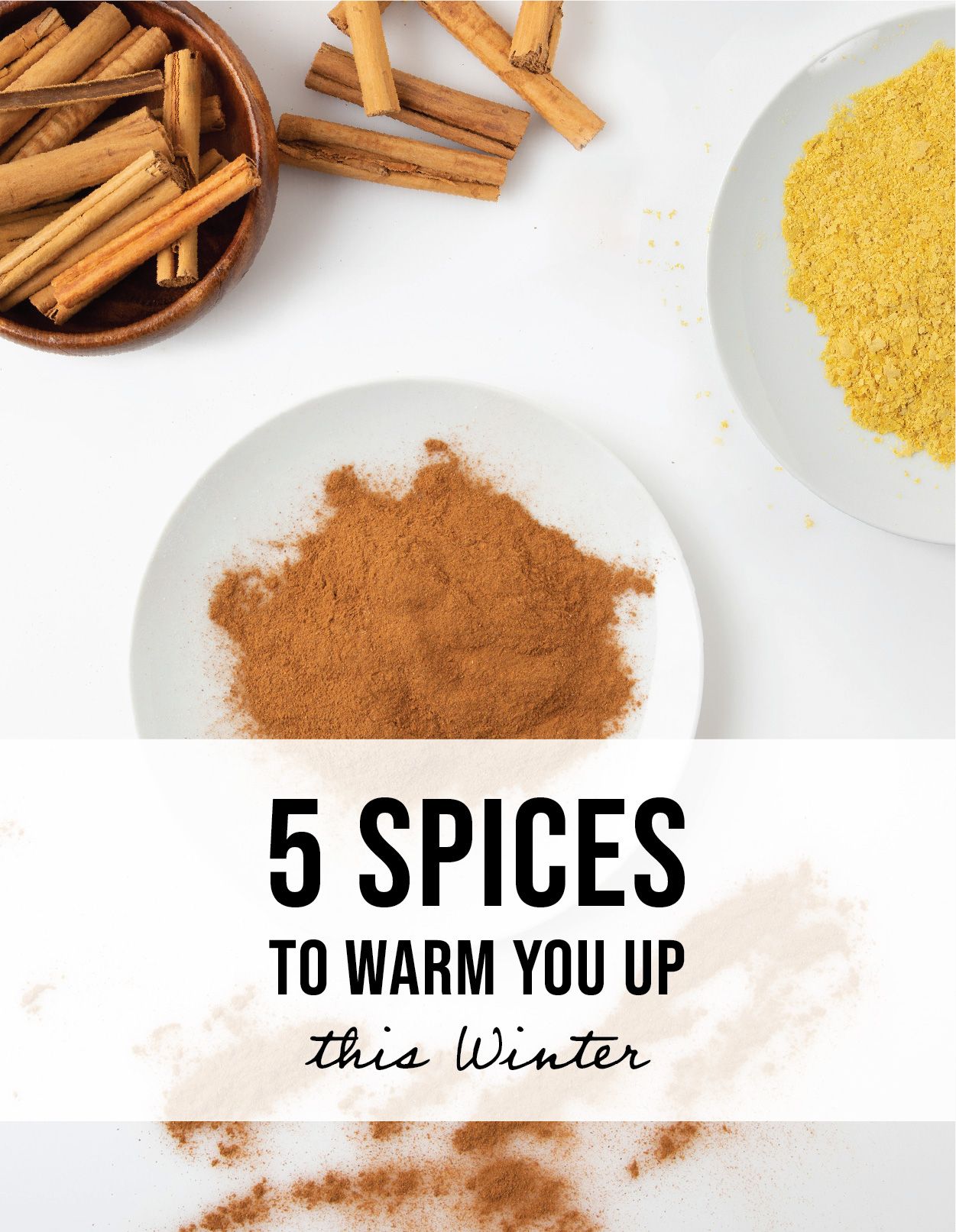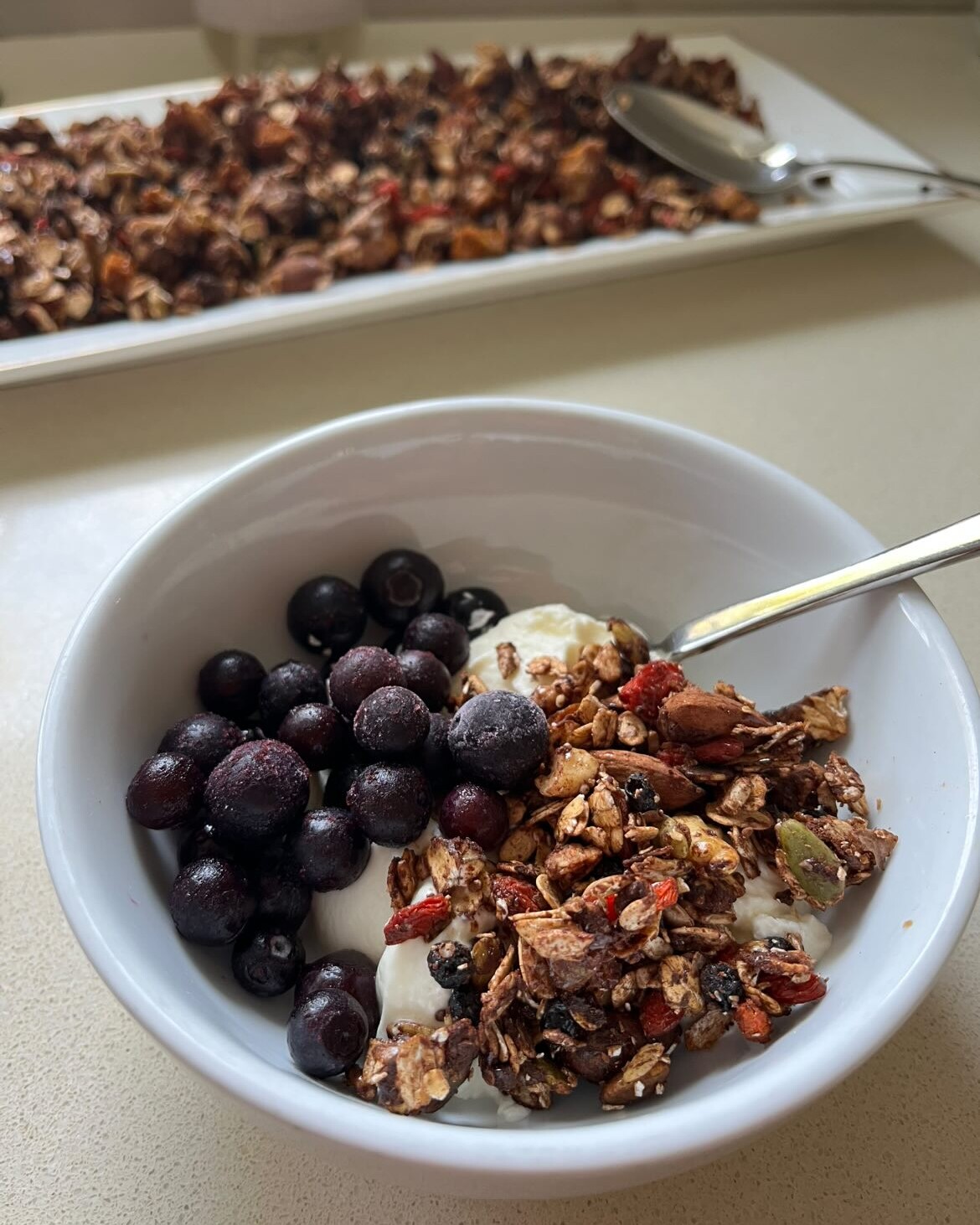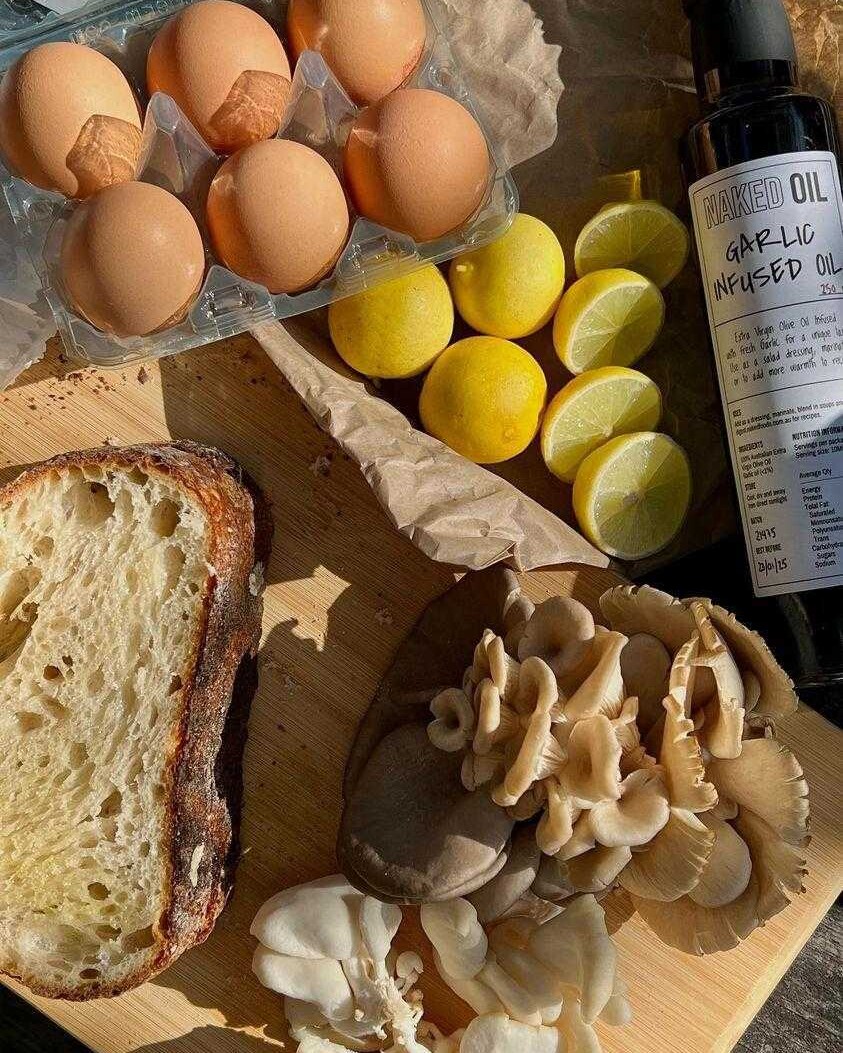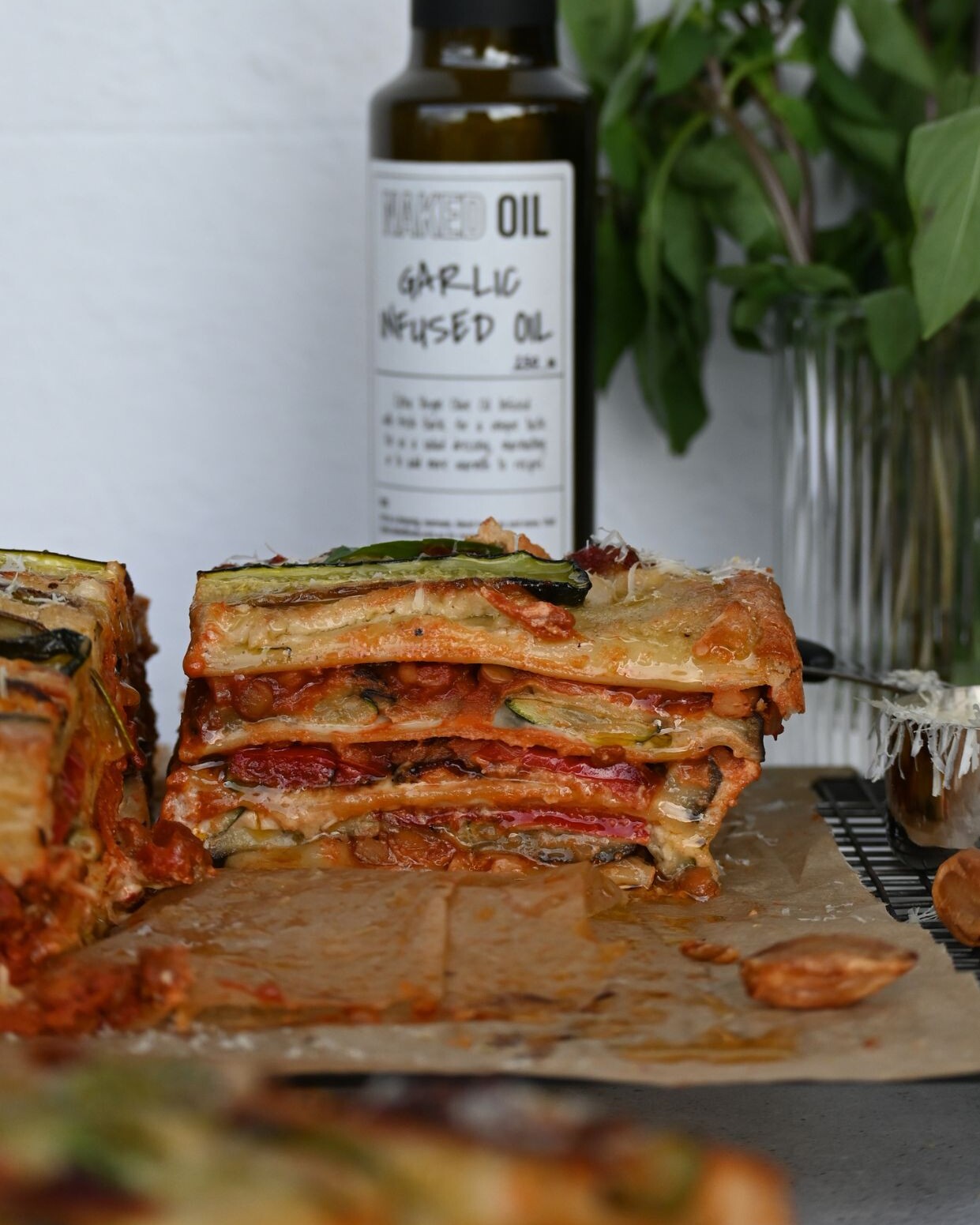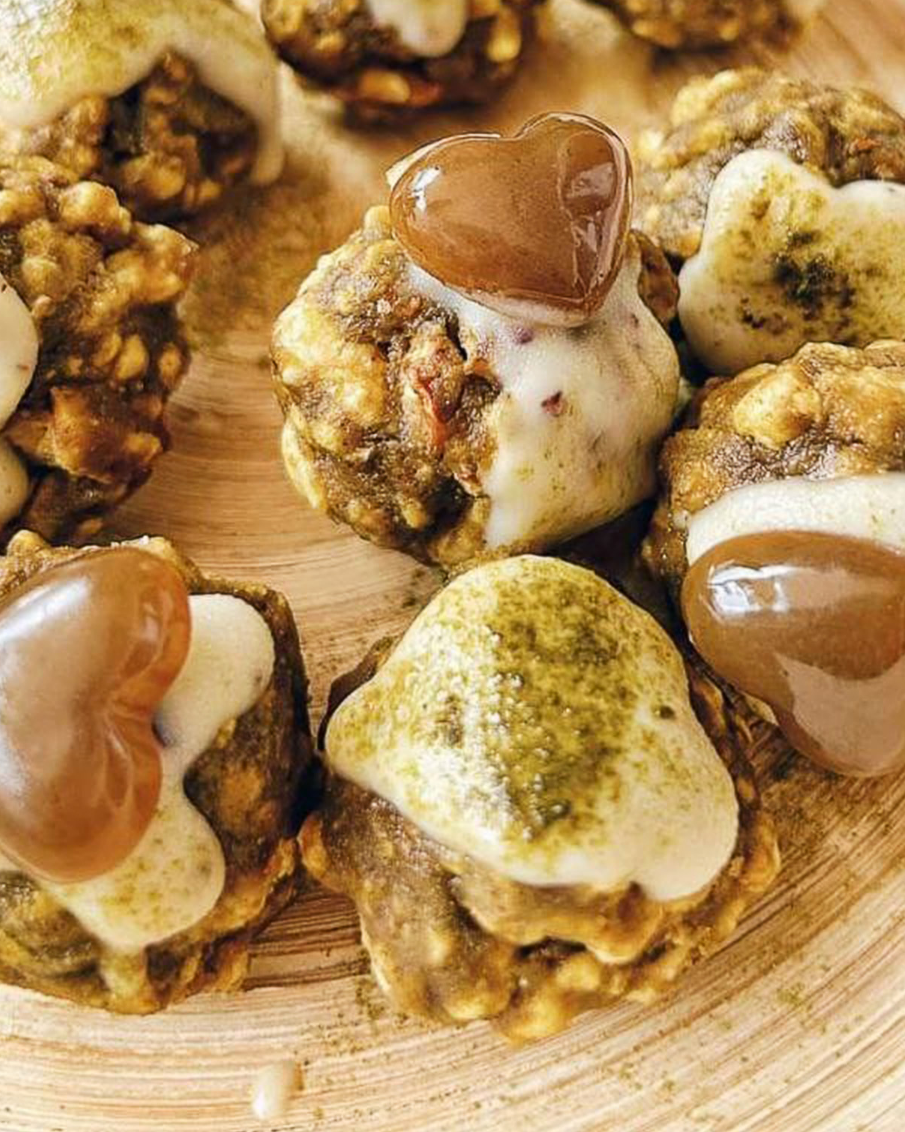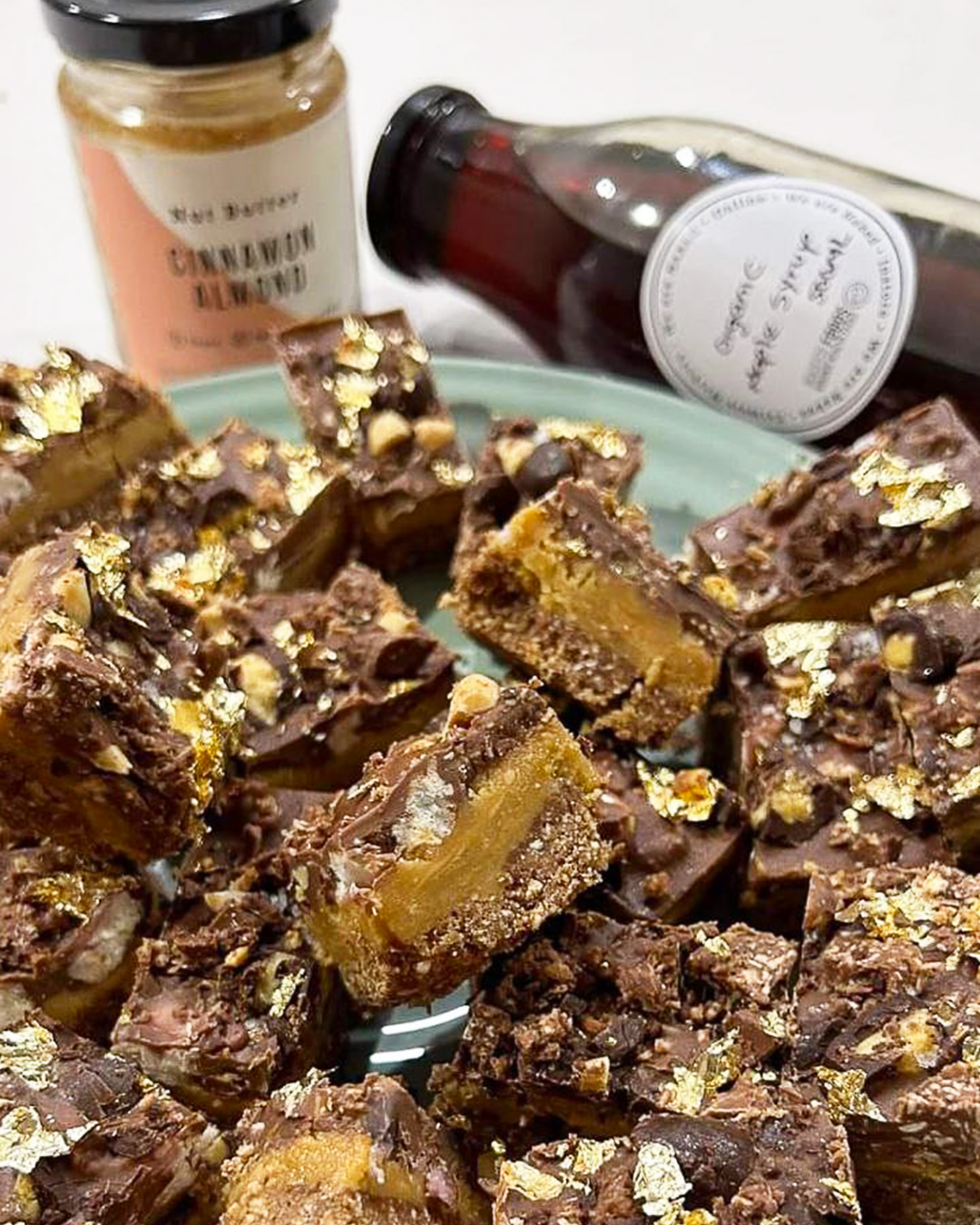Winter means rugging up in front of the heater, keeping warm and making some tasty food.
It also means it’s time to spice up your meals. The warmer, the better. Winter spices give a bold flavour to any meal or sweetness to any baked goods. Here are our top 5 spices to warm you up this winter.
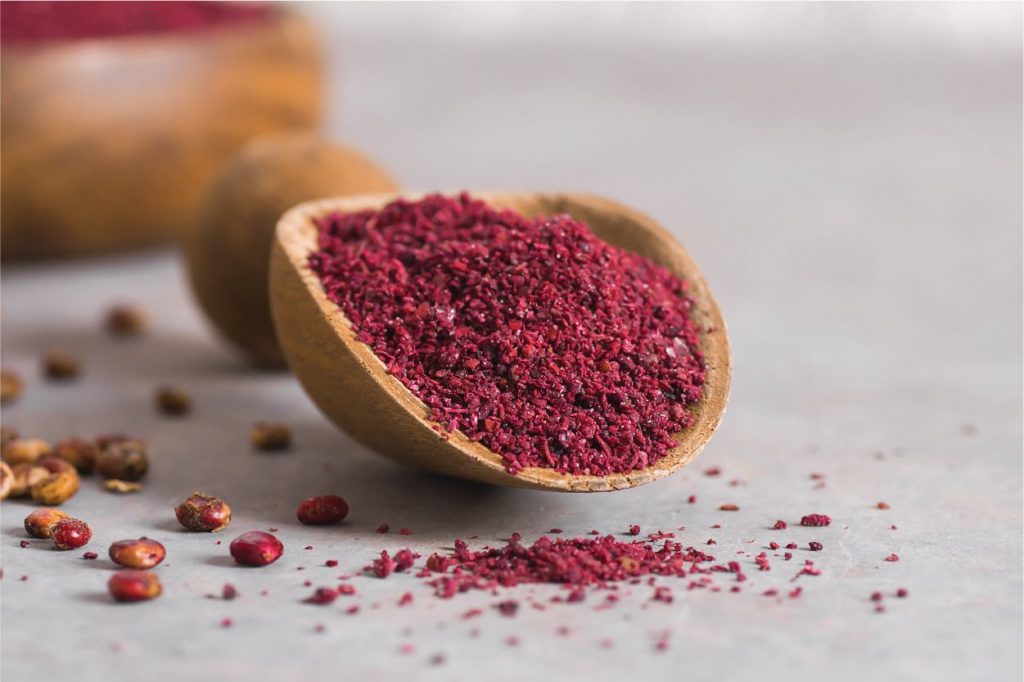
Sumac
An essential ingredient in middle eastern cooking, Sumac is a fruit of a shrub grown throughout the Mediterranean and the middle east. The berry itself is small and can range in colours from red to purple. Its colour is dependent on where it is grown. The berry is harvested before they are ripe and then left to dry out in the sun, where they will either sell as whole or as a powder.
Sumac has a tangy citrus taste with no aroma and contains fibre, healthy fats and essential vitamins like vitamin C, B6, B1 and B2. Sumac is used in spice rubs, tea’s, marinades and dressings and works well with chilli, coriander-cumin paprika and parsley.
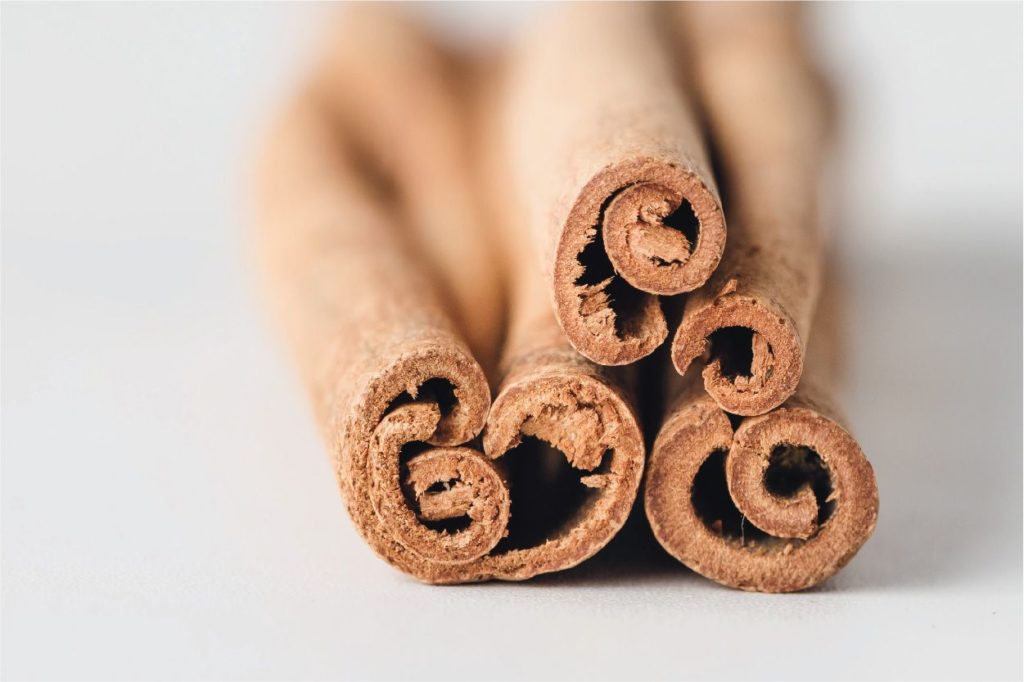
Cinnamon
Cinnamon is a staple in many households and cooking for centuries. The spice comes from the inner bark of an evergreen tree peeled and laid in the sun to dry. As it dries, it will roll itself into a scroll-like shape. You can also get Cinnamon in powder form.
You can add Cinnamon to curries, baked goods like banana bread and even teas and latte’s, but did you know that Cinnamon was beneficial to your health? It has anti-viral, anti-bacterial and anti-fungal properties and is widely used within Chinese medicine.
Cinnamon also has anti-inflammatory and prebiotic properties by promoting the growth of good bacteria in the stomach.
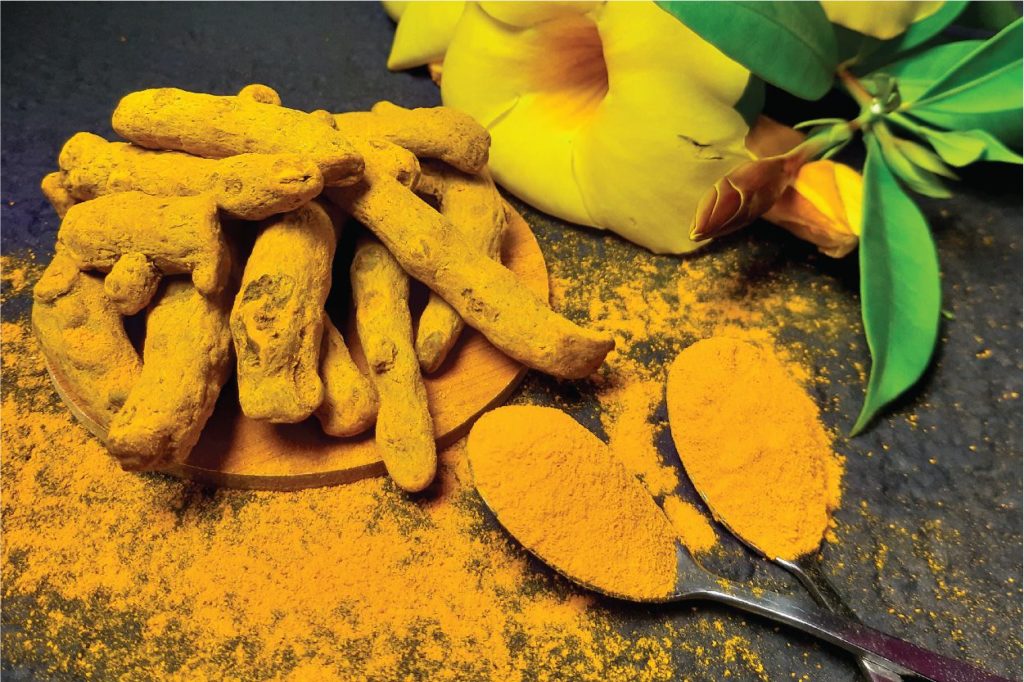
Turmeric
This golden powder is made from the root of the Curcuma Longa plant and widely used in Indian and south-east Asian cuisine. Before it ends up as a powder, the root is boiled, dried, and grounded until it is a powder. The yellow colour from the powder is called Curcumin and is the key active ingredient in the spice. Turmeric powder has a bitter, warm, earthy flavour and great in curries, lattes, teas, and condiments like mustard.
Recently his brightly coloured spice has been highlighted for its health benefits to our bodies, such as its medicinal and anti-inflammatory properties. However, it’s packed full of antioxidants, which can help with brain and heart health.
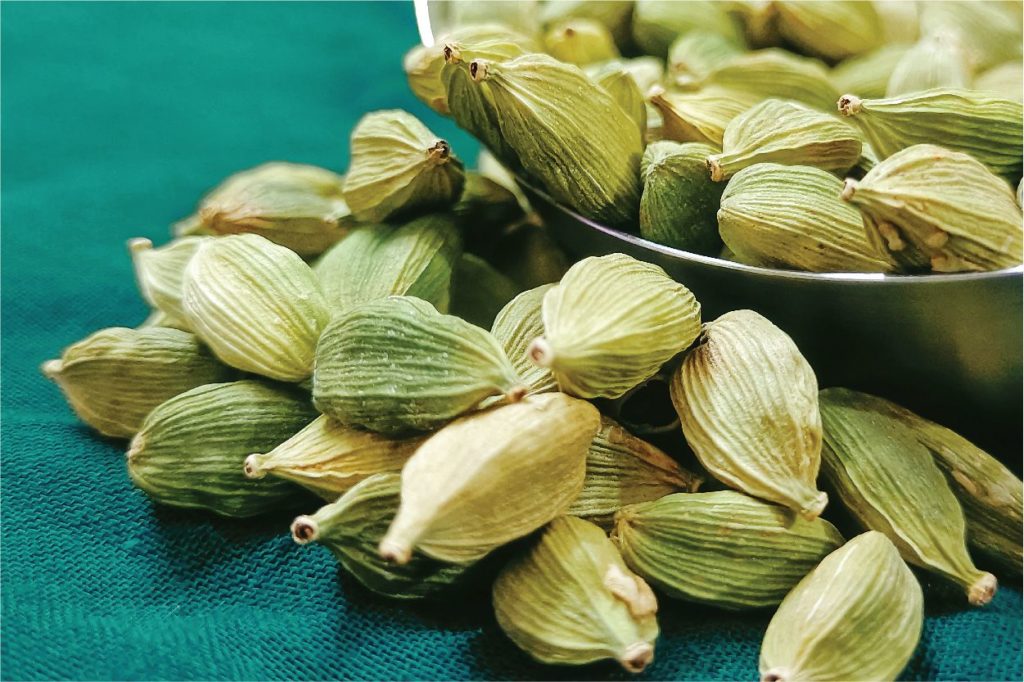
Cardamom
Cardamon is a multi-use space that you can use in sweet and savoury dishes. Used in Indian, Middle Eastern, Arabic and Swedish cuisine, this spice can have three varieties: black, white, and green cardamom, which is the common seed you will find at the supermarket. The spice can come as a whole pod, in seed or powder form. Cardamom has a strong, pungent flavour that is minty and sweet and can be used in almost any dish and found in the Garam Masala spice mix and masala tea.
Cardamom is used in traditional medicine for its anti-bacterial and anti-inflammatory properties. You can chew the spice seeds to freshen your breath and help aid digestion and gut health.

Nutmeg
This quintessential autumn and winter spice, Nutmeg, is the inner seed of a Mace from an evergreen tree in Indonesia. Nutmeg is used worldwide in all culinary dishes and has a slightly sweet and nutty spice that can be used whole or grounded down to a powder, but Nutmeg seeds can have a longer shelf life than its grounded down version.
You can add Nutmeg to any savoury, dessert or hot beverages to boost the flavour like eggnog.
Like the other winter spices, Nutmeg is full of anti-inflammatory and antioxidants that can improve mood but must be eaten in moderation due to its myristicin and safrole compounds which can cause hallucinations and loss of muscle coordination if you eat large quantities of the spice.
Bibliography
- Angle-Traegner, K (2020). Warm Spices for Cold Weather. Your Daily Vegan. Accessed <https://www.yourdailyvegan.com/2020/01/warm-spices-for-cold-weather/>
- Patel, P (2017) The Ultimate Guide to Winter Spices that will Warm You Up. Chef Palak Patel. Accessed <https://www.chefpalakpatel.com/the-ultimate-guide-to-winter-spices-that-will-warm-you-up/>
- Taste (n.d) What Is Sumac? Taste.com.au. Accessed <https://www.taste.com.au/quick-easy/articles/sumac/2eha8mcm>
- Lewin, J (2019). 6 Health Benefits of Cinnamon. BBC Good Food. Accessed <https://www.bbcgoodfood.com/howto/guide/health-benefits-cinnamon>
- Taste (n.d). What are the health benefits of turmeric? Taste.com.au. Accessed <https://www.taste.com.au/healthy/articles/turmeric-health-benefits/vno8965>
- Alfaro, D (2020). What is Cardamom? The Spruce Eats. Accessed <https://www.thespruceeats.com/all-about-cardamom-995599>
- Moncel, B (2020). What is Nutmeg? The Spruce Eats. Accessed <https://www.thespruceeats.com/what-is-nutmeg-1328522>
- Kubala, J (2019). 8 Science- Backed benefits of Nutmeg. Healthline. Accessed <https://www.healthline.com/nutrition/nutmeg-benefits#TOC_TITLE_HDR_8>
About the Author:
Latasha Trenaman is a Sydney based writer who is passionate about healthy eating. Latasha’s partner was diagnosed with diabetes in 2018. She has made it her life mission to share her and her partners’ experiences living with diabetes by promoting healthy food, especially sugar-free options. She believes in the power of writing and how it can inspire others in their journey to becoming more healthy. When she is not writing, she is walking her dog or baking sugar-free treats.

